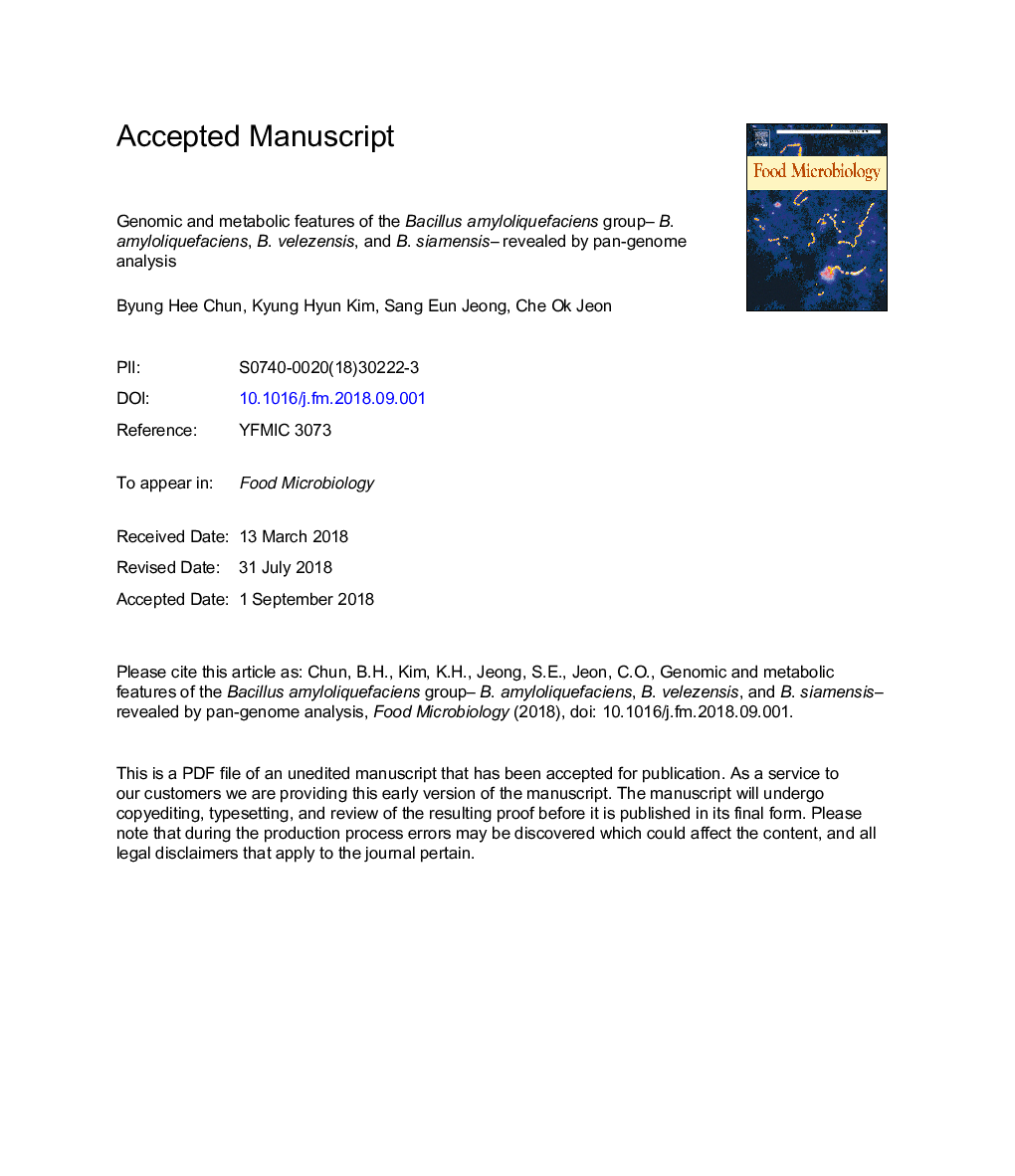| Article ID | Journal | Published Year | Pages | File Type |
|---|---|---|---|---|
| 10130143 | Food Microbiology | 2019 | 48 Pages |
Abstract
The genomic and metabolic features of the Bacillus amyloliquefaciens group comprising B. amyloliquefaciens, B. velezensis, and B. siamensis were investigated through a pan-genome analysis combined with an experimental verification of some of the functions identified. All B. amyloliquefaciens group genomes were retrieved from GenBank and their phylogenetic relatedness was subsequently investigated. Genome comparisons of B. amyloliquefaciens, B. siamensis, and B. velezensis showed that their genomic and metabolic features were similar; however species-specific features were also identified. Energy metabolism-related genes are more enriched in B. amyloliquefaciens, whereas secondary metabolite biosynthesis-related genes are enriched in B. velezensis. Compared to B. amyloliquefaciens and B. siamensis, B. velezensis harbors more genes in its core-genome which are involved in the biosynthesis of antimicrobial compounds, as well as genes involved in d-galacturonate and d-fructuronate metabolism. B. amyloliquefaciens, B. siamensis, and B. velezensis all harbor a xanthine oxidase gene cluster (xoABCDE) in their core-genomes that is involved in metabolizing xanthine and uric acid to glycine and oxalureate. A reconstruction of B. amyloliquefaciens group metabolic pathways using their individual pan-genomes revealed that the B. amyloliquefaciens group strains have the ability to metabolize diverse carbon sources aerobically, or anaerobically, and can produce various metabolites such as lactate, ethanol, acetate, CO2, xylitol, diacetyl, acetoin, and 2,3-butanediol. This study therefore provides insights into the genomic and metabolic features of the B. amyloliquefaciens group.
Related Topics
Life Sciences
Agricultural and Biological Sciences
Food Science
Authors
Byung Hee Chun, Kyung Hyun Kim, Sang Eun Jeong, Che Ok Jeon,
